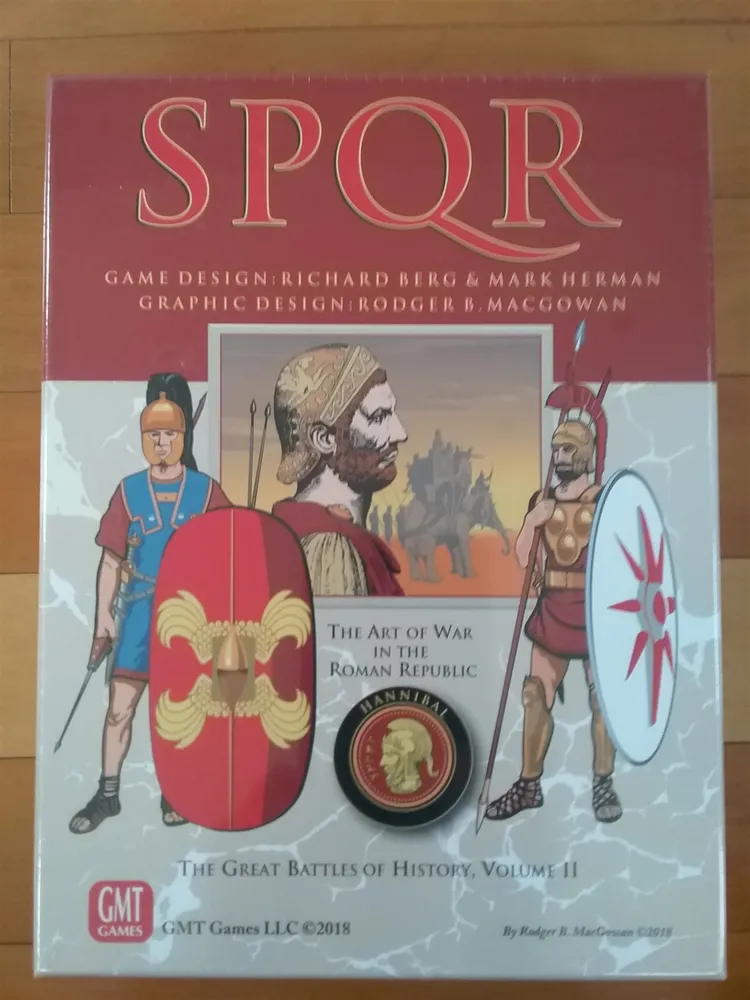SPQR (1992)
SPQR
SPQR is a board wargame designed by Richard Berg and Mark Herman, and released in 1992 by GMT Games as part of the Great Battles of History (GBoH) series of games on ancient warfare.
Why is SPQR Popular?
SPQR is popular and significant due to its:
– Historical accuracy: The game faithfully reproduces the battles of the Roman Republic, with detailed maps and counters that allow players to recreate historical scenarios.
– Awards and recognition: The game has received numerous awards and positive reviews, further increasing its popularity among board game enthusiasts.
– Expansions: Several expansions have been released for SPQR, adding more battles and enhancing the gameplay experience.
– Deluxe Edition: A deluxe edition was released in 2008, combining the basic SPQR game with all the expansions except for Raphia from “War Elephant” and Cirta from “Jurgurtha”. This edition also includes counters for the battle of Marathon and for the Jewish revolt against the Seleucid Empire.
Game Components of SPQR
How To Setup SPQR
Setting up SPQR involves placing the mapsheets on the playing area and deploying the counters according to the scenario being played. Each scenario has specific setup instructions detailing the placement of Roman and enemy forces, as well as any special rules or conditions for that battle. Players need to ensure all counters are correctly positioned and that the hexagonal grid maps are aligned properly.
Gameplay Mechanics and Game Objective
Player Experience
Playing SPQR offers a deep and immersive experience for fans of historical wargames. The game requires strategic thinking and tactical execution, as players must maneuver their forces effectively on the battlefield, leveraging the strengths of the Roman legion against various enemies. The historical accuracy and detailed scenarios make it appealing to those interested in ancient warfare.
Pros
Cons
Personal Thoughts on SPQR
SPQR is ideal for enthusiasts of historical wargames, particularly those with an interest in ancient Roman warfare. It offers a challenging and rewarding experience for experienced gamers, but may not be the best introduction for newcomers due to its complexity. The game’s depth and historical accuracy make it a standout in the wargaming genre, and its numerous expansions provide a rich and varied gaming experience.
We are supported by our audience. When you purchase through links on our site, we may earn an affiliate commission, at no extra cost for you. Learn more.

